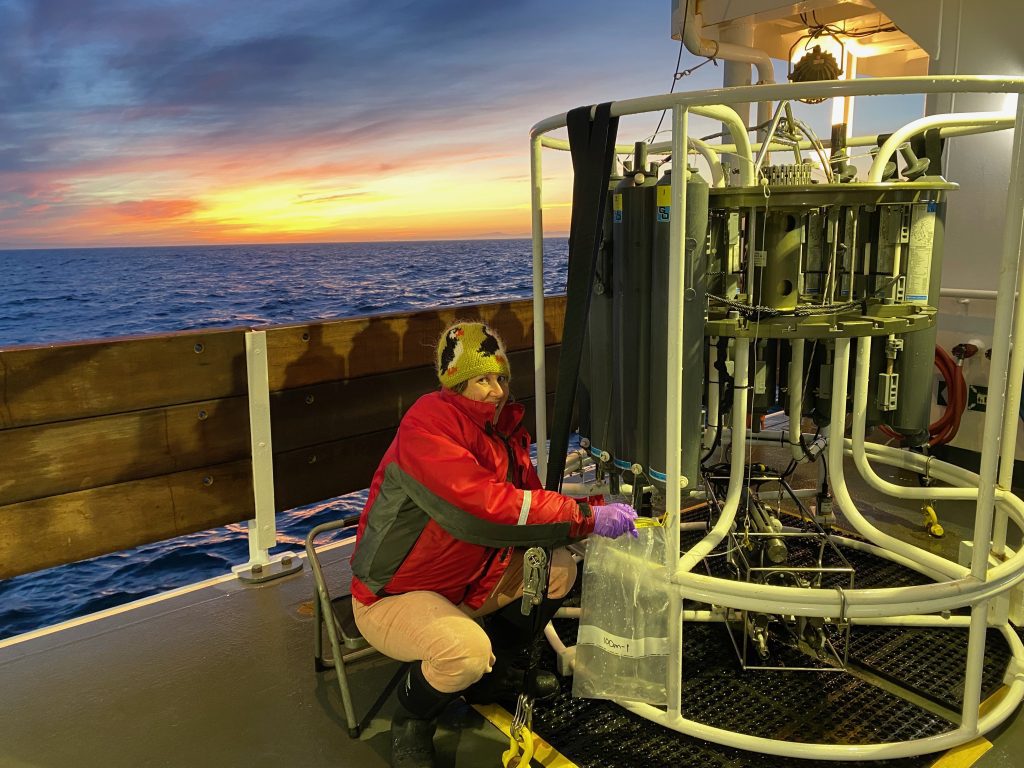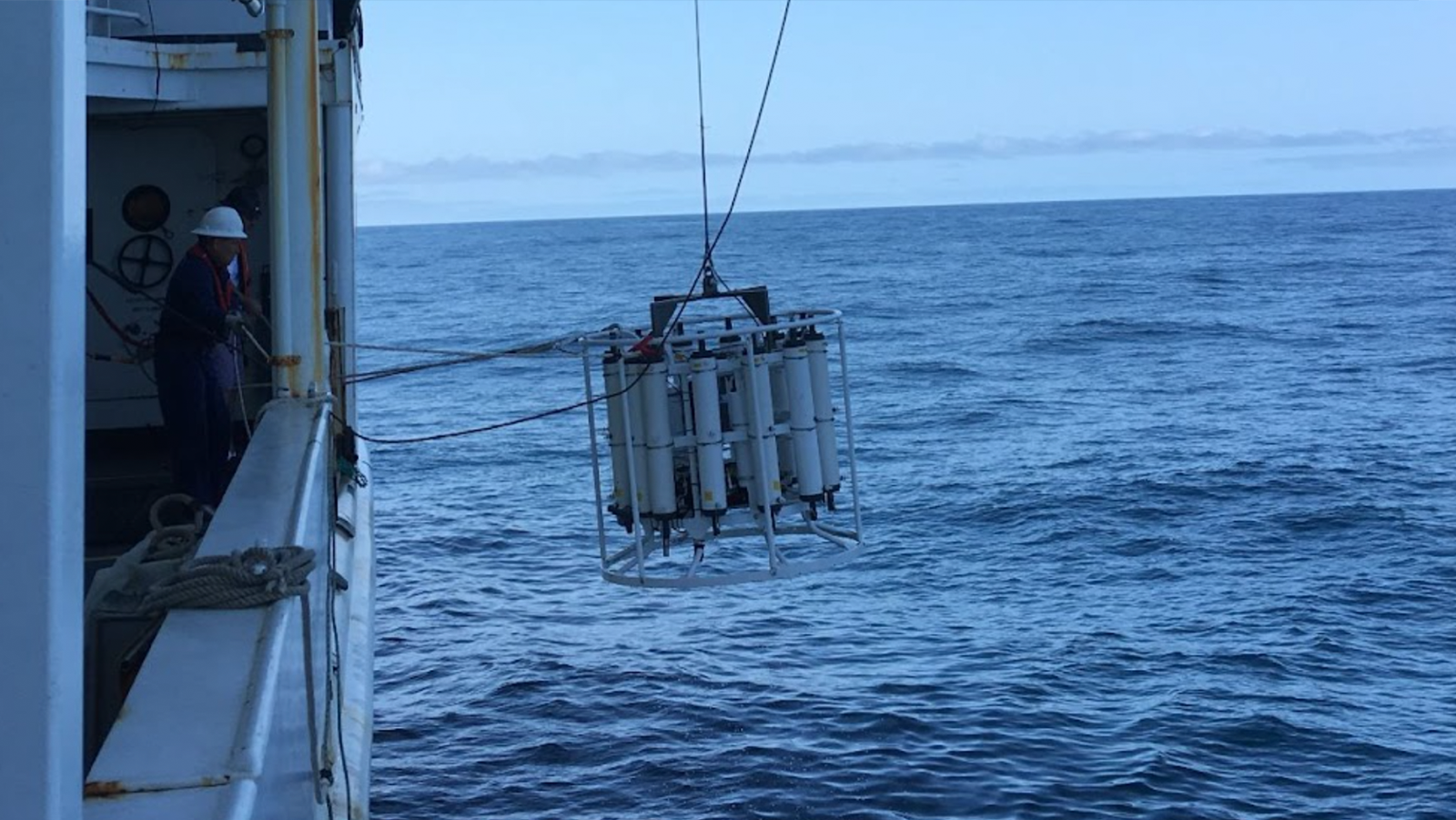Scientists at NOAA’s Atlantic Oceanographic and Meteorological Laboratory (AOML) have discovered that “long-read” genetic sequencing can be used to learn more about eukaryotic plankton, including krill and copepods, which are involved in many important marine processes.
A recent study by Dr. Nastassia Patin and Dr. Kelly Goodwin, scientists with AOML/CIMAS, examines the use of short-read and long-read DNA sequencing on environmental DNA (eDNA) samples from the California Current. Samples were collected on an annual NOAA Fisheries cruise, the Rockfish Recruitment and Ecosystem Assessment Survey, aboard the NOAA Ship Reuben Lasker. Scientists used a CTD (conductivity, temperature, depth) instrument’s water sampling Niskin bottles to collect water samples at desired depths, which were then later analyzed using ‘omics technologies such as short-read and long-read sequencing.

Most short-read sequencing is done using Illumina sequencing instruments, which can only sequence short (100-300 base pair) pieces of eDNA. These pieces are then combined to predict the original longer sequences. When using the short-read method to sequence eDNA, eukaryotic DNA, which is genetically more complex than DNA from prokaryotes like bacteria and usually only found in trace amounts, can rarely be assembled into longer pieces.
Long-read sequencing, through the PacBio platform, allows scientists to take a deeper look at eukaryotic DNA from organisms like single-celled algae and zooplankton, which are more challenging to detect using short-read sequencing. The ability to study the gene sequences of these ‘larger’ planktonic organisms is very valuable since krill and copepods serve a major role in the food chain as a prominent food source for fish and whales. The use of long-read sequencing can help to improve monitoring efforts of these important microorganisms.
For routine taxonomic surveys, scientists found that it is still preferable to use short-read sequencing because of the costs and complexity of long-read sequencing. While short reads provide sufficient information to assess microbial community composition, this study has given scientists a more effective method to study larger organisms whose DNA is found in trace amounts. The ability to use long-read sequencing when needed opens an important doorway to future genetic discovery.
Citation: Patin NV and Goodwin KD. 2022. Long-read sequencing improves recovery of marine picoeukaryotic genomes and provides insight into zooplankton biogeography. mSystems e00595-22. https://doi.org/10.1128/msystems.00595-22
